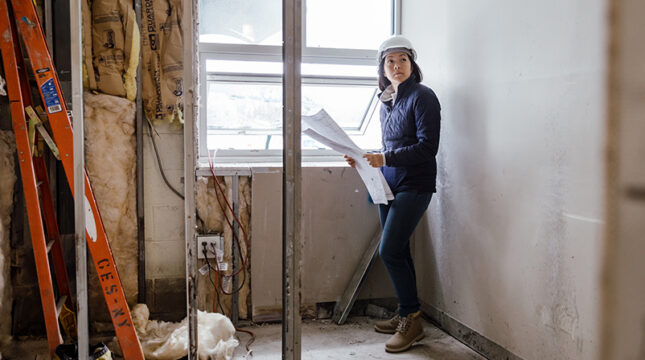What is a scope of work (SOW) in construction?
A scope of work is a document that outlines the rights and obligations of you, your client and any subcontractors you use. It brings everyone together on the same page before you begin a project. The fate of your general contracting business could depend on how well each project’s scope of work outlines the job.
A SOW is also known as a statement of work. Some contractors include a scope of work as part of their contract, while others treat it as a separate document.
A scope of work can help protect your profit margin. It forces you to consider the details of a project before you start work. You can better estimate labor costs, materials and other expenses, and it helps you align with your team and any subcontractors you hire.
Once you complete the scope of work, use it to manage your project by taking these steps:
- Get signatures: Have your client and any subcontractors sign your scope of work to ensure everyone agrees to it.
- Monitor the project: As work progresses, keep checking it against the timeline and techniques in your SOW to ensure you’re on track.
- Tackle changes: If your client asks for deliverables or materials not specified in the scope of work, you can create a change order to add them to the scope — and spell out cost adjustments as needed.
- Check your work: Before presenting the final product to your client, run through your scope of work to ensure you’ve met all requirements and deliverables.
How to write a scope of work for construction: 5 example elements to include
Depending on the kind of work you do, the size of your projects and your preferences, a scoop of work can be very flexible. For an effective document, we recommend these five elements:
1. Project overview
Also known as a job summary or project description, this first section includes a list of goals that the work must meet to be finished. The goal might be to renovate a number of apartment units or build a brand new home. The overview may also include notes like, “Contractor will create a professionally finished project and leave behind a clean, debris-free property.”
2. Project deliverables
This section outlines the tangible items to be completed and should include enough detail to guide your team and subcontractors through the project. The deliverables listed here should be measurable. Instead of saying “update bathroom,” it might say “Replace the sink with dual his and hers sinks, retile the shower and replace the existing commode with a low-flush toilet.”
3. Project scope
This precise breakdown of tasks and techniques explains how you’ll get the job done. It will reveal which subcontractors are responsible for what work and the specifications. It might specify that the electrician will wire the home with 20-AMP circuits instead of 15-AMP circuits. Or it might insist that the plumber use all copper pipes instead of PVC. This section should also include places for each subcontractor to sign off on their piece of the project.
4. Schedule summary
This section provides a list of project milestones with dates of completion. With it, your subcontractors can plan their individual schedules, and your client can understand when to expect visible progress. The schedule summary for building a new home might include dates for the following milestones:
- Structure frame completed
- Plumbing and wiring run
- Roof completed
- Interior completed
- Clean-up finished
5. Project management
This section includes the administrative details of a project, such as how the client should pay you, how you’ll handle change orders and what to do in the event of a dispute. Lastly, this section will include space for you, your client and any subcontractors to sign and approve the entire scope of work.
3 tips for rock-solid construction SOW writing and content
Every scope of work will be unique: short and simple, or long and complex. No matter your tack, keep these content best practices in mind.
1. Get visual
The scope of work can help your client see their project come to life. It tells them what to expect from your team and when to expect it. Don’t be afraid to include visual aids if it helps explain a complex idea or show what the end product might look like. Consider including:
- Photos
- Graphs
- Drawings
- Plans
- Models
2. Use clear, simple language
Your clients may not know what a floating floor is or the difference between a joist and a jamb. Don’t expect them to. Instead, clearly define industry terms to avoid miscommunication. Use wording that allows for only one interpretation.
3. Set reasonable expectations
It’s tempting to overpromise in a scope of work to secure a contract with an on-the-fence client, but resist the urge. Instead, establish realistic expectations regarding time, materials and costs to avoid potential disputes.
How NEXT supports the construction contractor business
NEXT makes it easy to explore construction insurance, purchase coverage and get a certificate of insurance within minutes so your business is protected while executing on your scope of work.
Get a quote, quickly get the coverage you need, and manage your policy via web or app 24/7.
Start a free instant quote with NEXT today.







